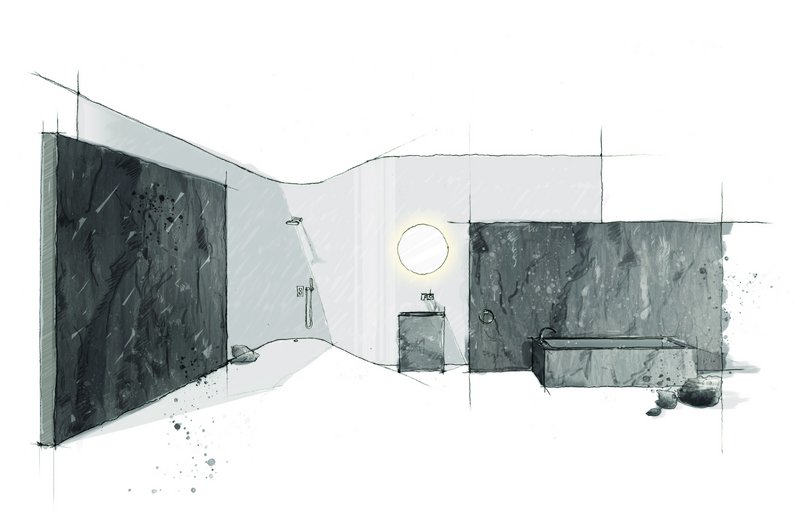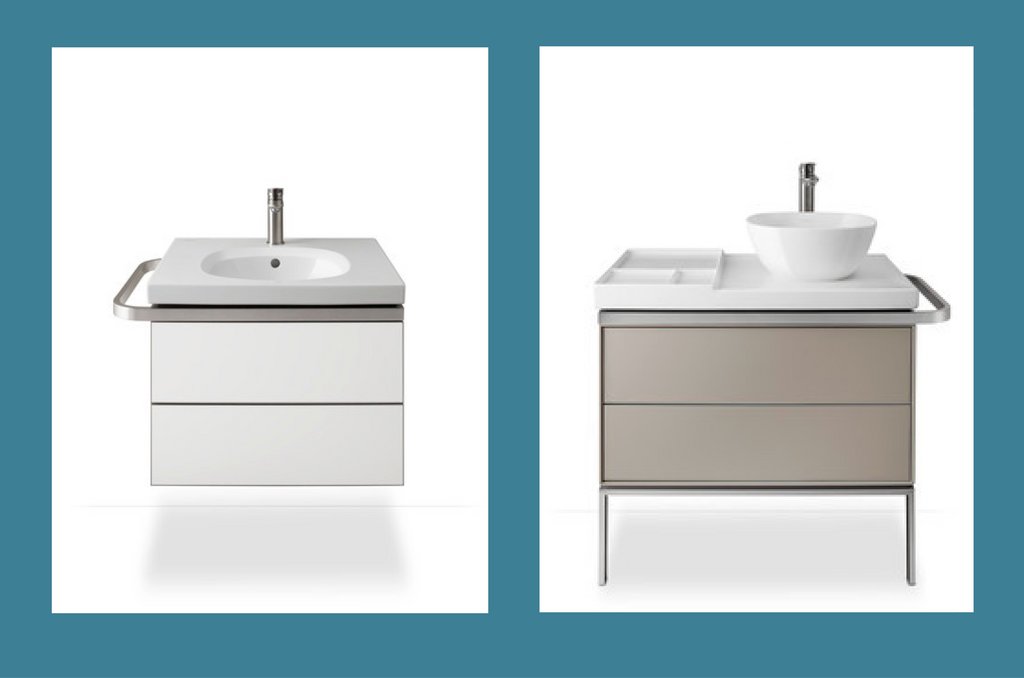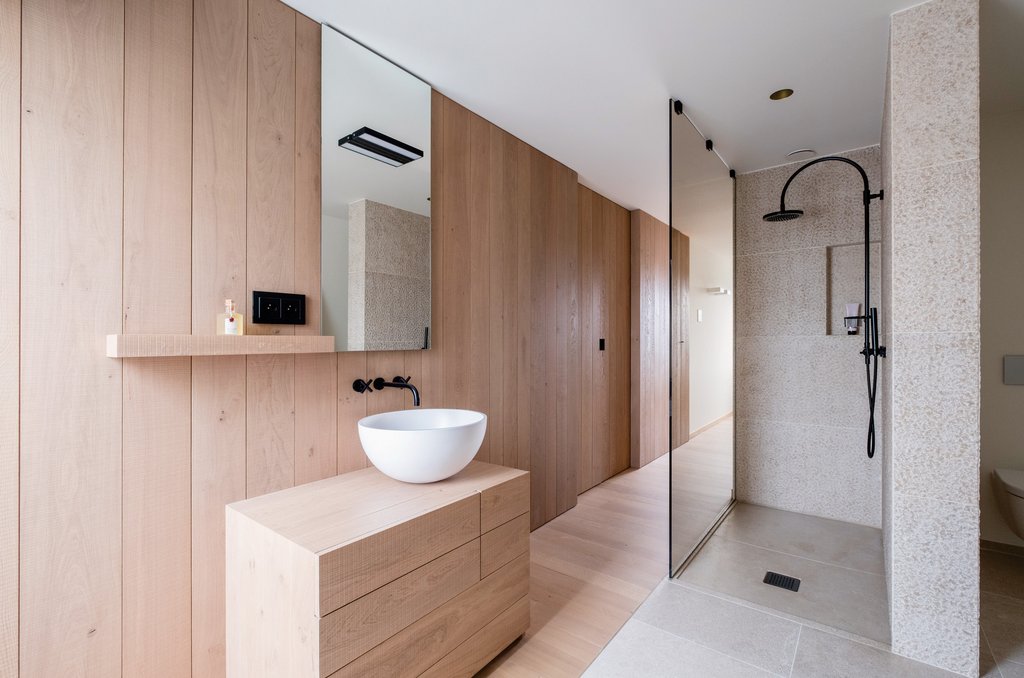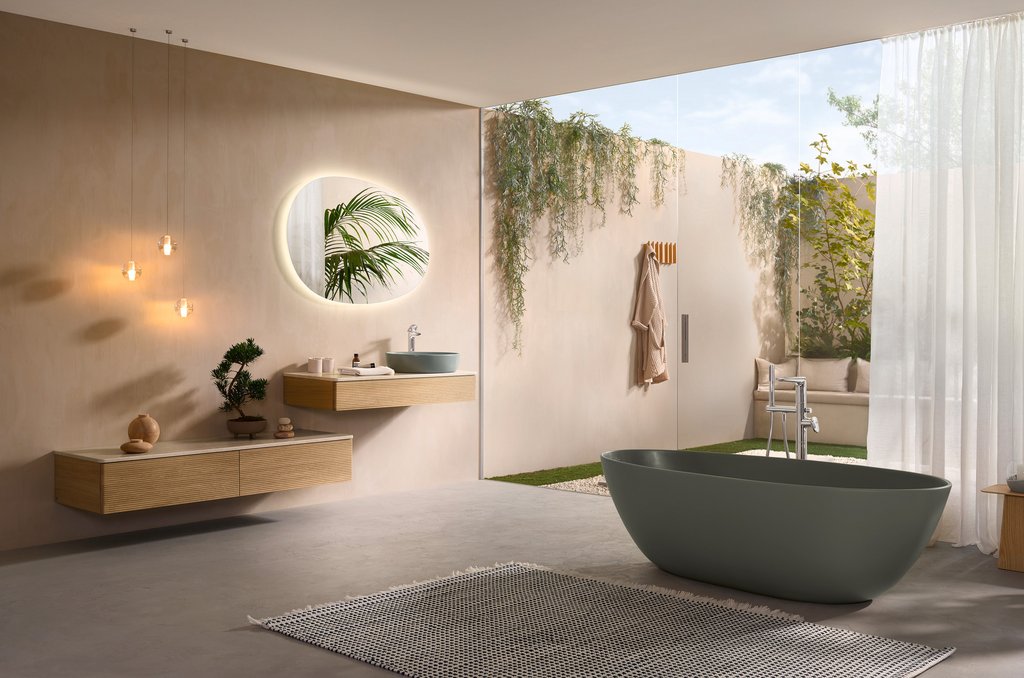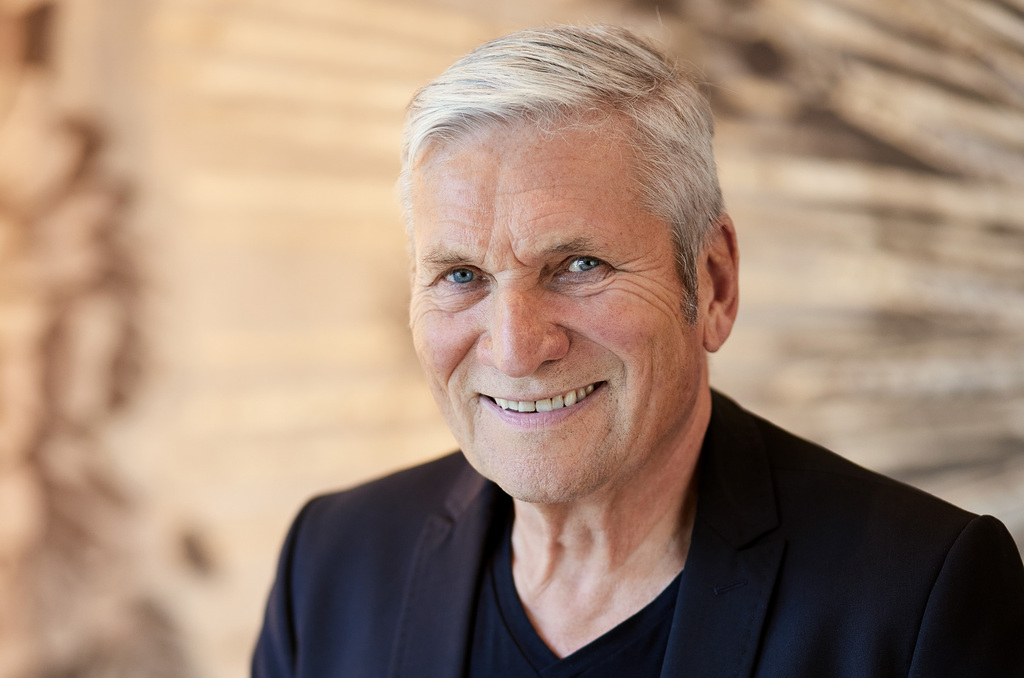The 10 interior design trends for the bathroom
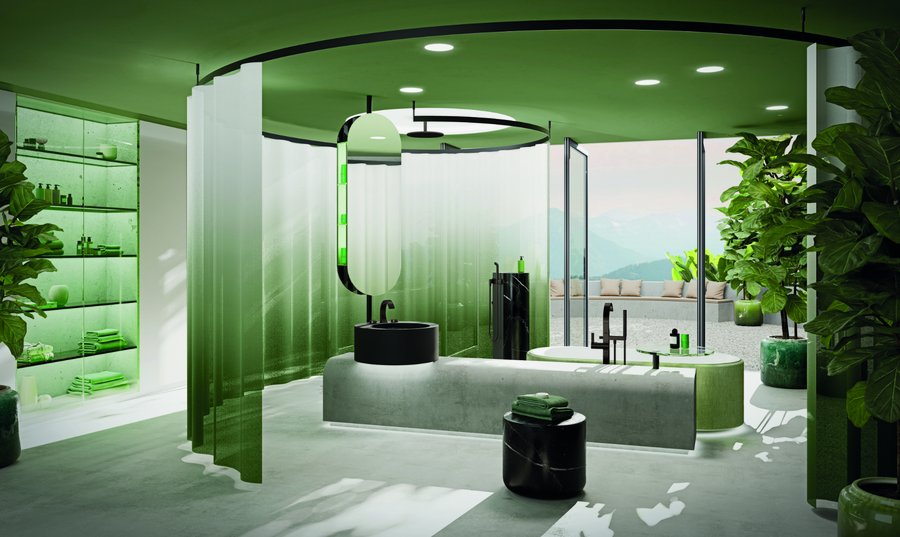
Photo: Dornbracht
What are
bathroom planners and architects focusing on in their designs for modern
bathrooms? Which colours, materials, surfaces and wall
coverings are on trend in today’s lifestyle bathroom? Which bathroom products have the
potential to become bestsellers, and which interior trends are influencing
bathroom design?
Sustainability isn’t
just impacting all areas of business, it’s affecting the design of our homes as
well – especially in the bathroom, where technology, ergonomic fixtures
and furnishings and energy-consuming equipment come together. In terms of
the materials, many bathroom products – like the ceramic sanitaryware, for
instance – are sustainable “by nature”, so to speak. But it takes more than selecting
products with the appropriate technical features and materials to make
sustainability tangible and convey a good feeling: the targeted use of design
elements that communicate a sense of being in touch with nature is key to ensuring
the bathroom doesn’t just last a long time but continues to please its owners
for a long time as well.
The bathroom sector has discovered colour in a big way recently. With its
“Coloured Bathroom” motto for the ISH 2019, Pop up my Bathroom promoted the
trend towards more colour in what has traditionally been a white space, and in the
meantime colour has come to be regarded as one of the most important design
disciplines of all for bathroom planners. Smooth, homogeneous finishes on the
walls have a very different impact as compared to the classic tiled look – a
tool that’s being used very deliberately in modern bathroom design. As for the
materials, the trend is towards naturalness. Wood is extremely popular throughout
the interior design sector – not just for living areas but for bathrooms too. Furniture
or consoles in real wood convey a sense of cosiness and bring a little bit of
nature into the bathroom – and despite the extreme temperature and humidity
levels, this approach works surprisingly well. What’s more, it appears that anything
that’s good for the garden and can withstand the wind and weather can also be
used in the bathroom: today’s outdoor products exhibit such a high standard of
design quality that they’re an ideal choice for bathroom interiors too.
Set accents with decorations in the bathroom
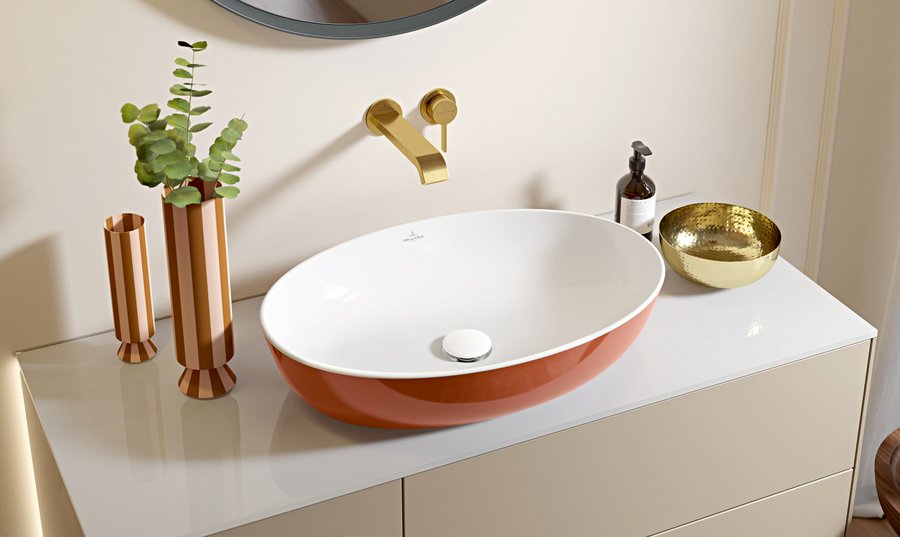
Photo: Villeroy & Boch
Something
else that’s on bathroom planners’ checklist right now is a new-found enthusiasm
for accessorising, which is why many of them are adding stylish finishing
touches before handing the new bathroom over to their clients. However, it’s
far more important to give the users themselves plenty of options for adding
decorative extras – and changing them whenever they feel like it. This can be
based on a colour mood that’s in keeping with the occupants’ colour type, for
instance, and provides starting points for different kinds of accentuation – such
as seasonal decorations, smooth walls that can be repainted instead of tiles,
or splashes of colour that can be echoed in various textiles. The subtle
use of new decorative items can suffice to give the bathroom a sustainable makeover
or freshen it up with fashionable lifestyle elements. Sometimes, the bathroom furniture itself
doubles as a stage for showing off decorations – thanks to display cabinet insets,
open shelves and compartments, or shelving elements and consoles that can be
positioned as required. The prerequisite is the deliberate integration
of suitable surfaces, and in the bathroom that’s only feasible if they’re not
cluttered up with everyday items. In other words: if accessories are
to work their magic, storage space is a must. Empty surfaces are an invitation to
change the decorative details, and innovative storage space keeps everything looking
neat and tidy.
Using
products that create clean lines and a spacious feel in front of the bathroom
wall often means installing innovative technology behind it. Installation
systems not only make the fitter’s life easier, they form part of the design as
well: bathroom products are mostly well-integrated design elements that dovetail
with the room’s architecture. Shower trays are becoming increasingly flat and
taking the shape of tiles, walk-in shower enclosures are transparent and
coloured, flush plates are as integrative as door handles, and shower toilets
are rapidly becoming the new lifestyle highlight in the bathrooms of northern
Europe.
The 10 following interior design trends are
intended as inspiration for modern bathroom design:
01 Showering in colour – with tinted shower enclosures
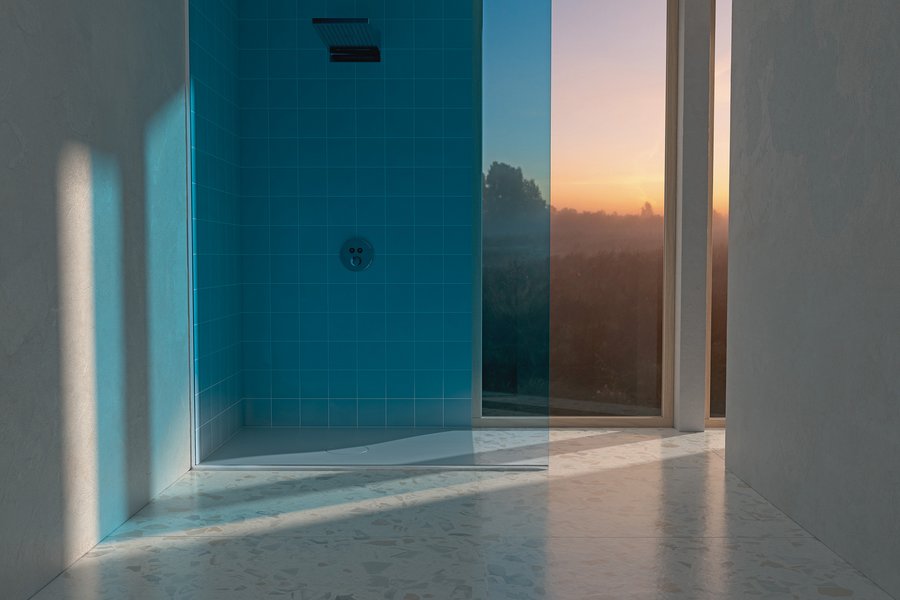
Poto: Bette, BetteAir
Big walk-in
showers combined with level access shower trays are popular in all age groups –
partly also because they give the room a more open, spacious look and feel. But the
transparent expanses of glass can also be used as a design canvas that stands
apart from the walls. In addition to frosted or sandblasted glass (which
is also available with patterns), coloured glass in an on-trend shade is
another attractive design option. The coloured glass fuses with the
space, creating totally different effects depending on the lighting situation
and colour temperature. This play with light and transparent glass is a
dominant design element and needs to carefully coordinated with the intended
colour scheme. Coloured glass enclosures are available from
various manufacturers, including Kermi or Duscholux.
02 Bicolour in the bathroom: echoes of the car industry
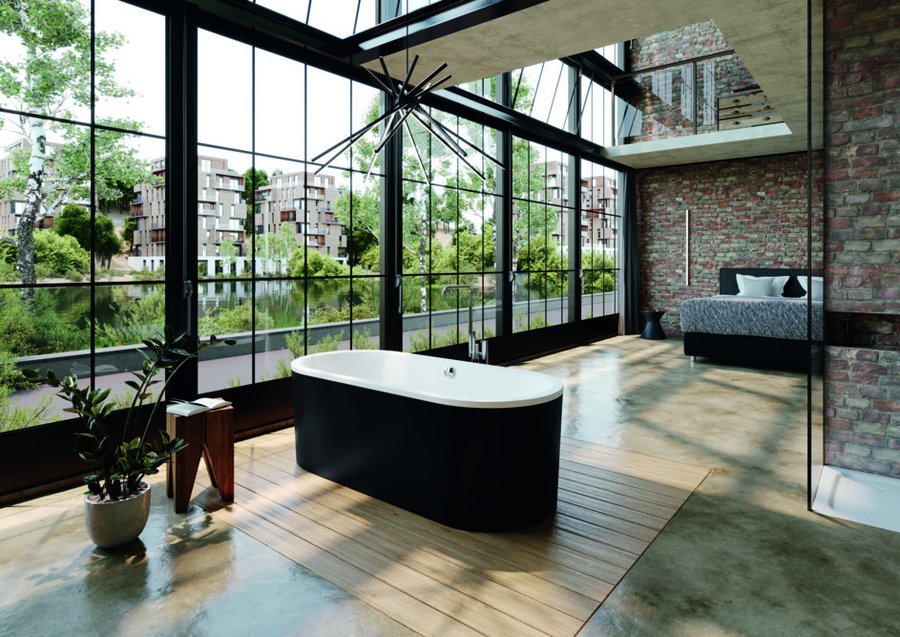
Photo: Kaldewei, Classic Duo Oval
Freestanding baths are an on-trend eye-catcher in professional bathroom
design right now. Although they generally come in single-coloured
versions, they’re available in lots of different shades and provide a
very effective way to turn a bathroom into a lifestyle space. The
bicolour design principle has made its way into the bathroom before: in the
1980s, especially in France, colour gradients were popular for ceramic products
and bathtubs made of synthetic materials. Colour trends are the most obvious proof
that trends come in waves – and it’s the same with the bicolour trend, which is
currently back in fashion. But not, however, with a soft gradient like in
the 1980s; this time round, two colours are juxtaposed to create a
colour-blocked look – as modelled by the current VW camper van, for instance. In the
bathroom, this trend is showing up in freestanding baths from Kaldewei that
enable customers to choose the inside of the tub and its outer panelling in two
different colours. The trend can easily be translated into other
bathroom products too, because nowadays many of them (like furniture, for
example) can be configured individually.
03 Black in the bathroom: urban, vibrant and great for creating contrasts
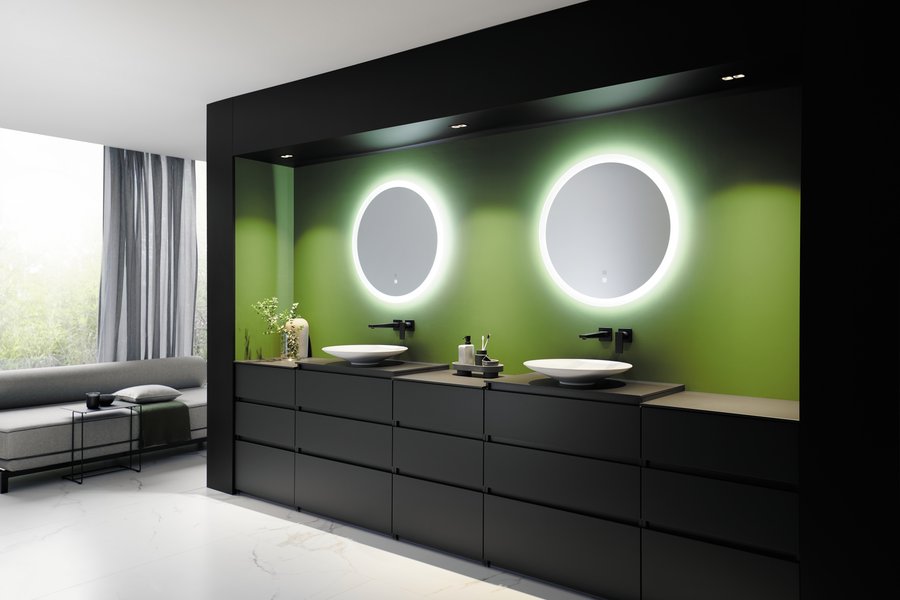
Photo: burgbad; Lin20
Who would have thought that black would prove such a popular colour (or
finish) for the bathroom and be used in such a permanent way. Black finishes
for fittings add a very special, loft-like touch to the interior design, but don’t
only look good in an urban setting. For the courageous, a piece of
furniture with an upmarket matt black finish can be used to make a bold
statement, and playing with dark shades is a great way to show other colours off in
all their glory and create striking contrasts. Last but not least, accent lighting also
has special role to play when deep black or dark grey elements are selected for
the design. Meanwhile black – once such an elitist trend – is reaching the
mainstream and will definitely be of interest to professional bathroom planners
in the coming years thanks to the innovative finishes now available for
fittings and accessories.
04 Real wood in the bathroom: nature arrives in the private spa
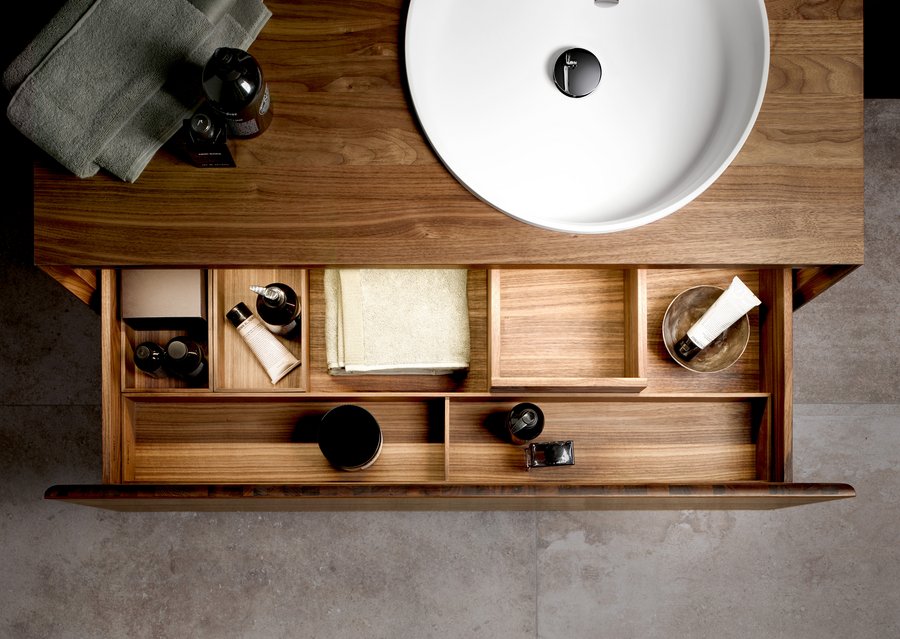
Photo: Keuco und Team 7, Edition Lignatur
Sustainability is a megatrend right now, and the visualisation of
nature-oriented design ideas will shape the face of bathroom planning over the
next 10 years. Wood makes the design authentic. Bathroom
furniture manufacturers like burgbad or Keuco (in collaboration with Team 7)
have developed collections that make real wood a viable option for the bathroom
too – and bring a little piece of nature with them.
05 More (than) green: sustainable design elements
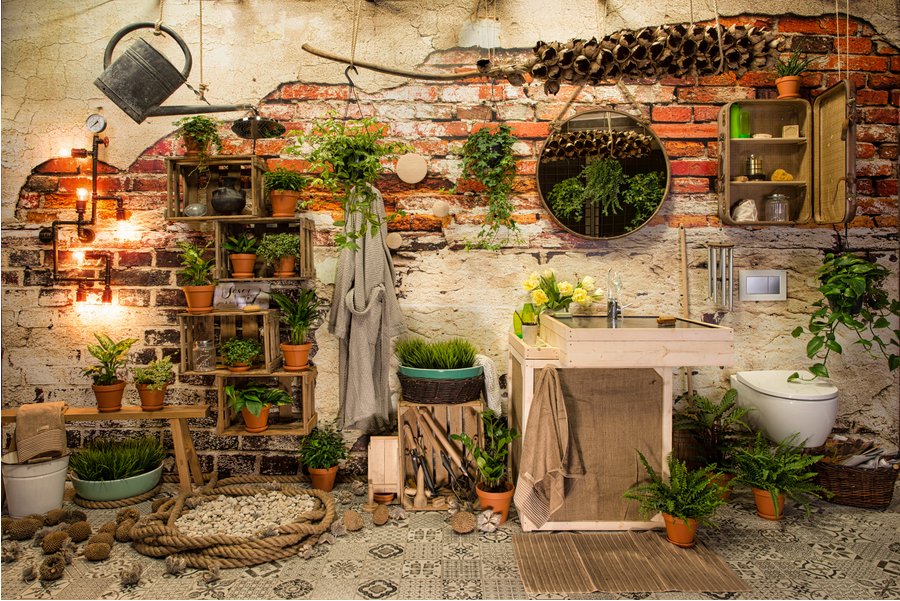
Photo: Vereinigung Deutsche Sanitärwirtschaft e.V.
Sustainability isn’t just influencing the choice of materials and
technical equipment, it’s impacting the interior design of the bathroom as
well. In principle, many bathroom products – like ceramic sanitaryware or
water and energy-saving fittings – already come with a built-in sustainability
factor. But it takes more than selecting sustainable and top-quality products to
make the concept tangible and give the user a good feeling; it calls for the
targeted use of design elements that communicate a sense of being in touch with
nature as well. While it’s crucial for the design to be sustainable
in the sense that it’s top quality and made to last, the atmosphere also plays a key role
at emotional level. The colour green, for instance, is a
particularly good choice for visualising sustainability. Natural
hues create a perfect backdrop for a “green” interior design, even if it
doesn’t include any green at all: Plants that thrive in bathroom
conditions and floral motifs for accessories and/or wall coverings are a quick
and effective way to conjure up a green oasis, for instance. The use of
natural materials like eco-friendly plaster, natural stone or wood also play a
supporting role in sustainable bathroom design.
06 Smooth surfaces for the wall: marble, wallpaper or stucco
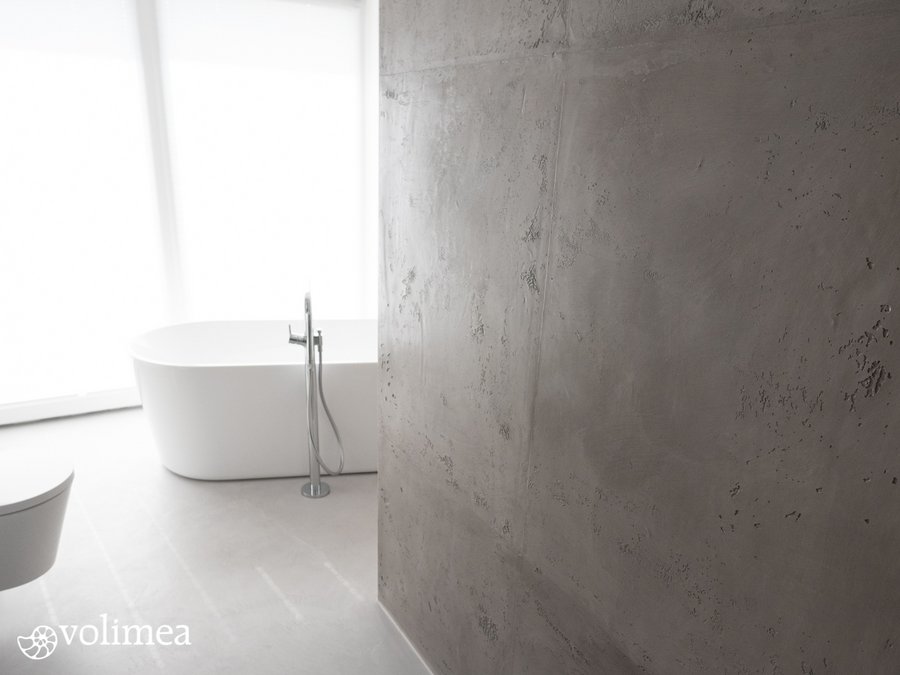
Photo:
Volimea (www.volimea.de)
Uninterrupted, homogenous surfaces for the walls and floor are extremely
popular in the mid-price and high-end segments right now. The options
for the wall range all the way from premium wallpapers to expanses of marble
cladding. A stucco wall, especially above the washbasin, is often bathroom
planners’ first choice nowadays – but only if they don’t have to worry too much
about the budget: depending on the number of layers applied and
the finish, stucco can be a not inconsiderable cost factor, especially when
opulent colour effects are involved. Tiles are often extra large, look
like natural stone and are laid as close together as possible – although,
conversely, some planners are also using small tiles to create a metro-style
look. Concrete effects continue to be a popular design option too. The smooth,
hardwearing surfaces dispense with the familiar patchwork look and enhance the
bathroom with a cosy, upmarket feel.
07 Enhancing the interior design: changing styles for a professional update
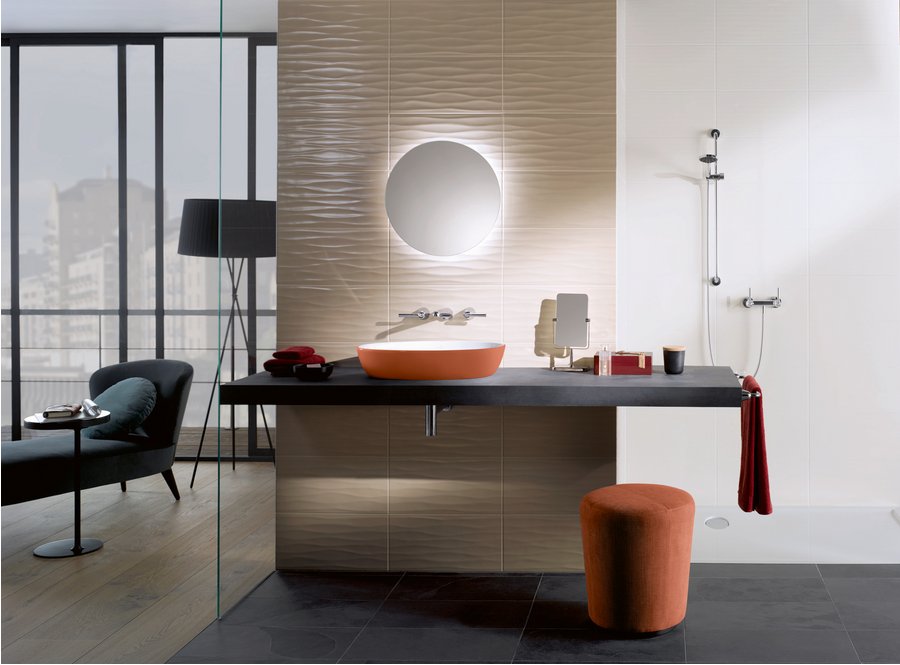
Photo:
Villeroy & Boch, Artis
The accessorising trend in interior design is here to stay. It’s up to
the individual to decide whether or not the trend towards seasonal decorations
makes its way into the bathroom, but professional bathroom planners are giving
their clients as many options as possible for enhancing the interior design
with decorative elements. The principles are simple: it’s vital to
provide as much storage space as possible so that everyday items can be hidden
out of sight. Uncluttered surfaces create a sense of calm and steer the focus towards
a few carefully chosen but eye-catching decorative items. The guiding
principle: “Less is very definitely more”. Changing these accessories can
totally change the appearance of the bathroom. A new colour for the towels and mats
paired with matching accessories is a quick and easy way to turn the “blue
lagoon” into a “green forest”. Neutral basic colours for the tiles, walls and
floors, like the on-trend grey and greige shades, provide an ideal platform for
adding attractive accents via the styling.
08 Outdoor products for the bathroom: the trick for creating a cosier feel
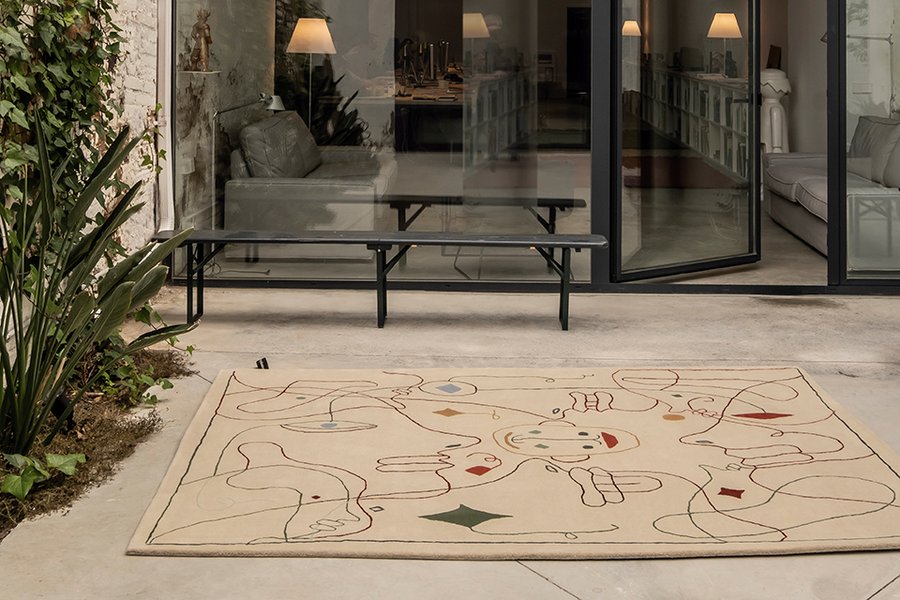
Photo: Nanimarquina
The outdoor sector is booming: patios and gardens are turning into
second living rooms, and water-resistant products have long since left their
discounter image behind them. On the contrary: prestigious brands are
offering premium outdoor products with outstanding design qualities. Bathroom
planners can choose from a treasure trove of new product categories: waterproof
rugs, textiles and upholstery, chairs and side tables, lamps, wooden elements
and a vast assortment of accessories. The new generation of outdoor
furniture is bringing an even cosier feel to the bathroom.
09 The ultimate highlight for the lifestyle bathroom: shower toilets provide a new standard of hygiene
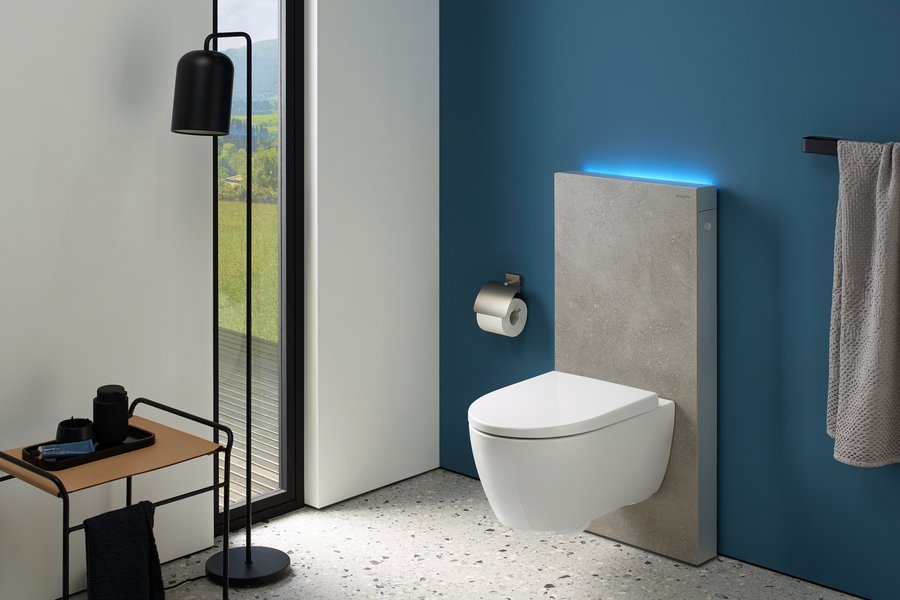
Photo:
Geberit
It’s about luxury and convenience, not looks: the shower toilet has
become the No. 1 lifestyle product for the bathroom and a growing clientele is driving
demand for this hygiene-boosting product category. In addition to providing water-based
intimate hygiene, contemporary smart toilets can be operated via remote
control, a wall panel or even a smartphone and be equipped with optional extras
like a heated seat, an air dryer, a welcome light function, a lid that opens
and closes automatically, different programs for individual users and
disinfecting functions. And whereas most of the bathroom’s technical
features tend to disappear behind the wall, the shower toilet remains very much
visible and communicates a tangible added value on a daily basis. In cases
where the bathroom design is based on a storyline, the shower toilet is
undoubtedly the grand finale.
10 Creative finale: architectonic details influence a bathroom’s interior design
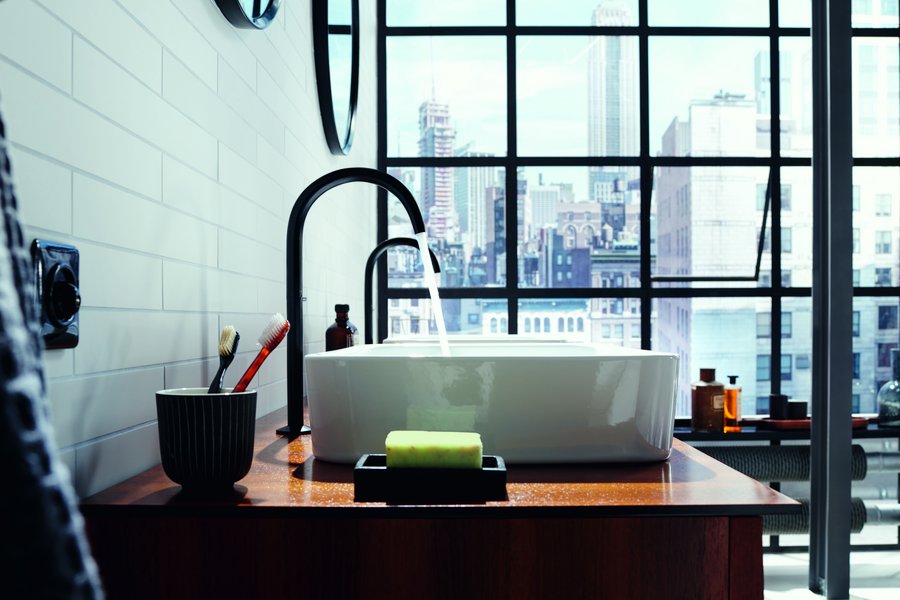
Photo: Hansgrohe, AXOR, One
Eye-catching taps and fittings are to bathroom planners what door
handles are to architects: although barely identifiable to the clients during
the planning stage (because the line on the drawing doesn’t really tell them
much), they are of key importance to a bathroom’s interior design. In addition
to fittings and accessories, there are other bathroom products that require
careful consideration too because they impact the look and feel of the space despite
their small size – things like the strip drain in the level access shower, for
instance, the hinges on the shower enclosure or the toilet flush plate. It’s no
coincidence that these style-defining products – like the Velvet flush plate by
design superstar Konstantin Grcic for Tece, for instance – are often the work
of famous designers. After all, they’re a sure way to express the
consistent quality of the bathroom’s professional interior design.
